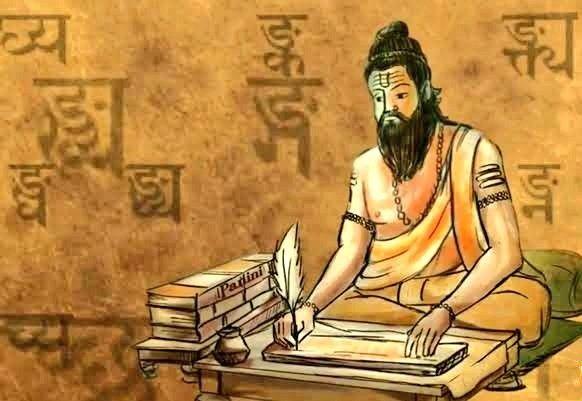Ashtadhyayi - A brief
Introduction
- This section delves into how syntax is developed and how to make sense of form and sound in language.
- The earliest known approach to this is Panini's work, a grammarian from the 6th Century BCE (approximately 2800 years ago).
Panini and Aşțādhyāyi
-
Panini's work serves as a great way to understand the Indian contribution to linguistics.
-
Aşțādhyāyi:
- Created by Panini.
- "Ashta" means eight, and "adhyaya" means chapter.
- The work consists of eight chapters.
-
Panini's work is the culmination of a long grammatical tradition.
Panini's Approach
-
Panini did not invent a language from scratch; he reverse-engineered it for easy understanding and logical approach to Sanskrit.
-
He observed the existing language use and patterns to frame proper rules of grammer.
-
3983 Rules (Sutras):
- Panini wrote 3983 rules, known as Sutras.
- These rules were designed to accommodate the patterns and variations in the Sanskrit language.
- He fitted these patterns using the rules.
Structure of Aşțādhyāyi
- The 3983 rules are arranged into 8 chapters.
- Each chapter is further divided into 4 quarters.
- 8 chapters x 4 quarters = 32 sections.
Samskritam (Sanskrit)
- Panini's work (Ashtadhyayi) refines and structures the language.
- Samskritam means "refined."
- Sanskrit is considered a very refined language.
- The Ashtadhyayi is viewed as the best available descriptive model of a language.
Later Commentaries
-
Katyayana's Varttika:
- Composed about 200-250 years after Panini.
- Varttika means commentary.
- Commentary on Panini's work.
- Addressed loose ends and clarified Panini's work.
- Provided additional notes.
-
Patanjali's Mahabhashya:
- Commentary on the Ashtadhyayi.
- Created in the 2nd Century BCE (another 200 years later).
- "Bhashya" means commentary, and "Mahabhashya" means great commentary.
- Katyayana's Varttika and Patanjali's Mahabhashya, together with Ashtadhyayi, provide a basis for understanding the science behind the Sanskrit language.
Distinguishing Aspects of Panini's Grammar
-
Complete Vocabulary:
- The entire vocabulary of the Sanskrit language can be generated using the 3983 rules (approximately 99.9%).
-
Handling Exceptions:
- Special handling for the few exceptions.
-
Sutras (Aphorisms):
- The rules are known as Sutras (aphorisms).
- Easy to memorize.
- Concise.
- Provide crisp rules.
-
Mastery of Sanskrit:
- Familiarity with the rules leads to an unambiguous mastery of the Sanskrit language.
- One effectively becomes a "walking Sanskrit language" without needing dictionaries or thesauruses, once a person masters these sutras or rules.
Educational System and Sanskrit Mastery
- The traditional Indian education system (until the 19th century CE) ensured students mastered this language.
- Introduction of the Macaulay system of education resulted in a discontinuity.
Rule-Based Processing and Word Generation
-
Language processing and word generation in Sanskrit are strictly rule-based and derivative.
-
Similar to a mathematical equation: entire words can be derived through rules.
-
Computer-Driven Methodology:
- Suitable for computer-driven methodologies.
- Few additional assumptions are required.
Distinguishing Aspects of Panini
- Word derivation uses a step-by-step process.
- Modular approach to word generation.
Word Formation
-
Involves combining basic components:
- Verbal root or nominal stem.
- Adding suffixes.
- Invoking rules.
- The process results in a valid word.
-
Unique, algorithmic approach.
-
Vocabulary is not fixed.
-
New words can be generated as long as the rules are not violated.
Panini's Work: Data Structures and Computational Elements
- Panini deployed interesting data structures and computational elements.
- This makes his work unique among linguistic studies.
Vedanga and Panini
- Vyakarana or grammer is one of the Vedangas, or the limbs to understand the Vedas.
- Panini's work puts together grammatical ideas.


No Comments